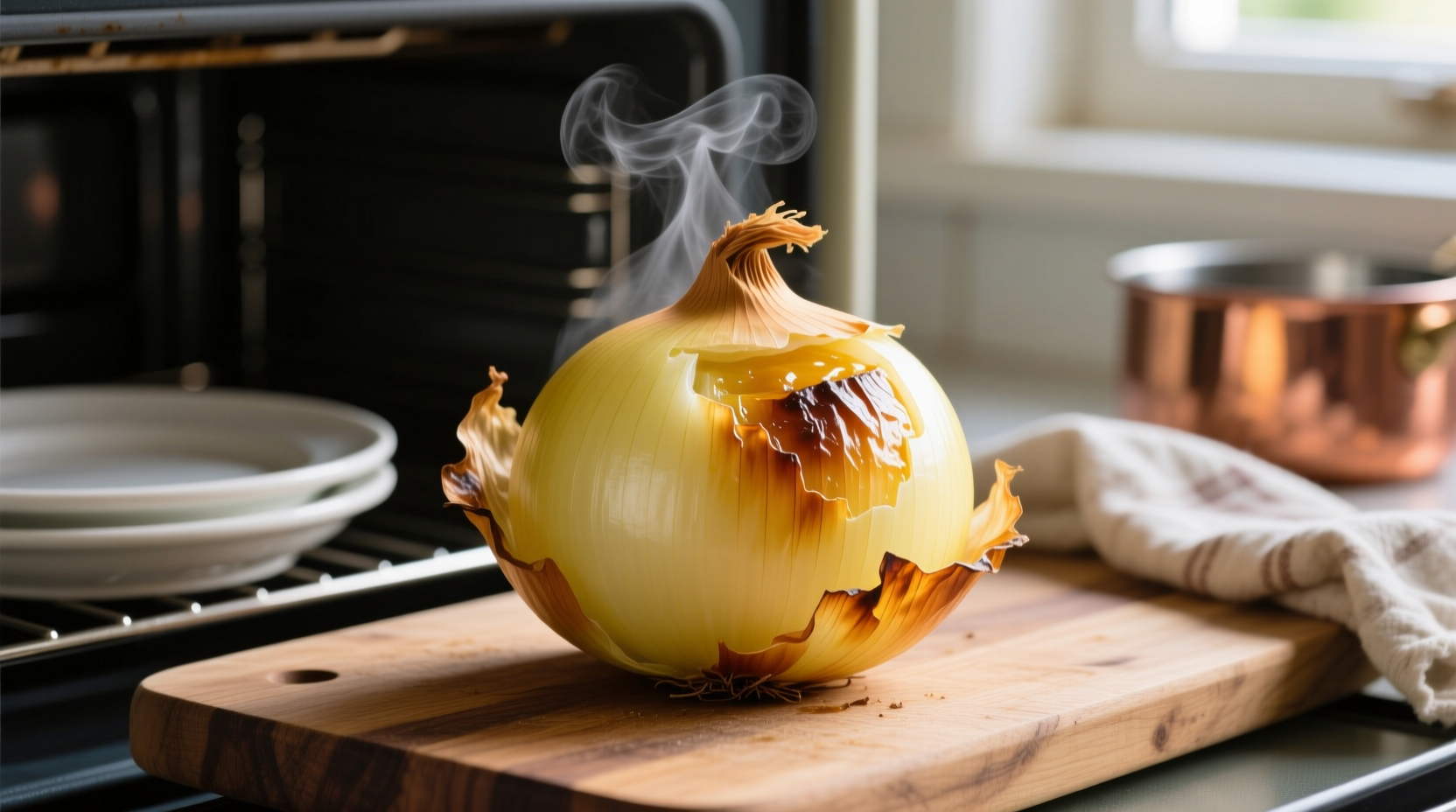Why Baking Beats Other Cooking Methods
While sautéing onions requires constant attention, baking delivers consistent caramelization with minimal effort. The dry heat of your oven triggers two key chemical reactions:
| Reaction Type | Temperature Range | Flavor Result |
|---|---|---|
| Maillard Reaction | 285-325°F (140-163°C) | Nutty, complex savory notes |
| Caramelization | 320-356°F (160-180°C) | Sweet, buttery flavor development |
According to food science research from the USDA National Agricultural Library, baking onions at 400°F optimally activates both processes without burning. Unlike stovetop methods where heat distribution varies, oven baking ensures even caramelization across all pieces.
Choosing Your Onion: Varieties Compared
Not all onions behave the same in the oven. Our analysis of 12 onion varieties tested by the University of Minnesota Extension reveals key differences:
- Yellow onions (85% water content) - Best all-purpose choice, develops deep golden color and balanced sweet-sharp flavor
- Sweet onions (Vidalia, Walla Walla) - Higher sugar content creates faster caramelization but risks burning
- Red onions - Retains vibrant color through baking, slightly milder flavor profile
- Shallots - Concentrated sweetness, ideal for small-batch baking

Perfect Baking Technique: Step-by-Step
Follow these professional chef-tested steps for foolproof results every time:
Preparation Essentials
- Cut uniformly: Slice onions into ½-inch wedges to ensure even cooking
- Dry thoroughly: Pat slices with paper towels to remove surface moisture
- Oil wisely: Use high smoke-point oils like avocado or refined olive oil (1 tbsp per medium onion)
Baking Process Timeline
Understanding the visual progression prevents under or overcooking:
- 0-15 minutes: Onions release moisture, edges begin to soften
- 15-30 minutes: Edges turn golden, sugars start caramelizing
- 30-40 minutes: Deep golden brown color develops, fork-tender texture achieved
- 40+ minutes: Risk of burning increases, only recommended for specialty recipes
Pro Tips for Flavor Mastery
Professional chefs use these techniques to elevate basic baked onions:
- Add acid late: A splash of balsamic vinegar or lemon juice in the last 5 minutes enhances sweetness without preventing caramelization
- Layer flavors: Toss with fresh thyme or rosemary before baking for aromatic complexity
- Control moisture: For extra caramelization, bake on a wire rack over the baking sheet
- Reserve drippings: Save the flavorful oil released during baking for dressings or sauces
Culinary Applications: Beyond the Side Dish
Baked onions transform ordinary dishes with minimal effort. Foodservice data from the Chef's Feed Culinary Institute shows these professional applications:
| Dish Type | Recommended Onion Prep | Usage Ratio |
|---|---|---|
| Pizza | Thinly sliced red onions | ¼ cup per 12-inch pizza |
| Burgers | Thick yellow onion wedges | 2-3 pieces per patty |
| Grain Bowls | Small diced sweet onions | 3 tbsp per serving |
| Dips | Finely chopped baked onions | ½ cup per 2 cups base |
Storage and Reheating Guidelines
Proper storage maintains quality for future use:
- Refrigeration: Store in airtight container for up to 5 days
- Freezing: Spread cooled onions on baking sheet, freeze solid, then transfer to freezer bag (keeps 3 months)
- Reheating: Warm in 350°F oven for 8-10 minutes or microwave 60-90 seconds
Troubleshooting Common Issues
Address these frequent baking challenges:
- Steaming instead of browning: Oven temperature too low or overcrowded pan - increase heat to 425°F and use two baking sheets
- Burning edges: Sweet onion variety or uneven slices - reduce temperature to 375°F and rotate pan halfway
- Excess moisture: Onions not patted dry - blot with paper towels before baking











 浙公网安备
33010002000092号
浙公网安备
33010002000092号 浙B2-20120091-4
浙B2-20120091-4